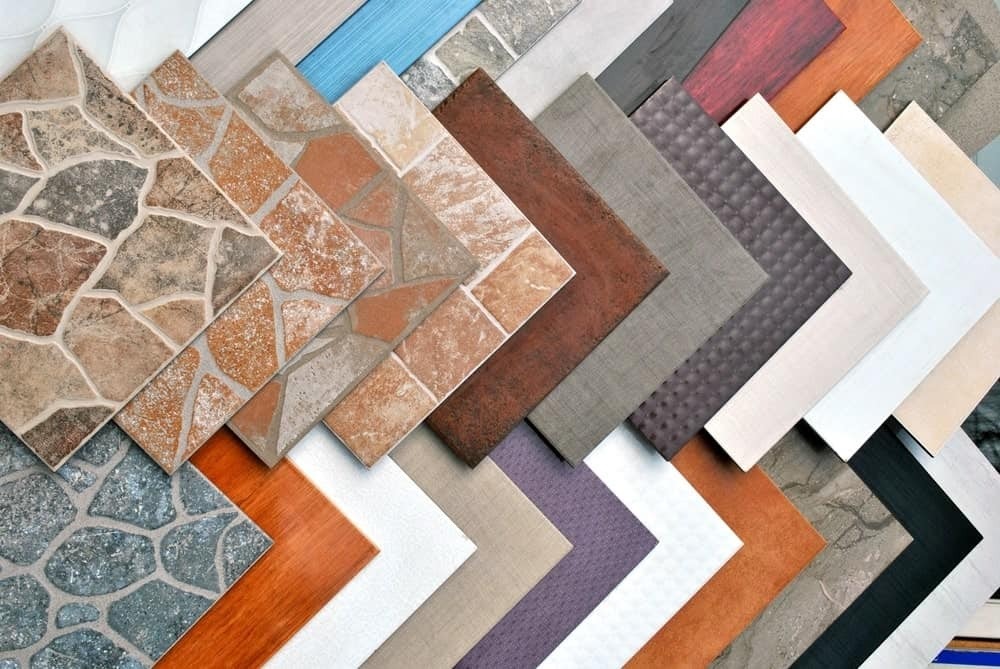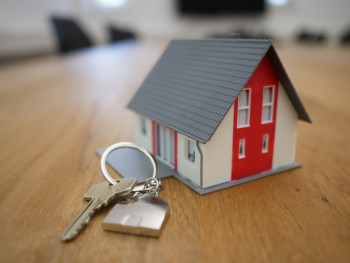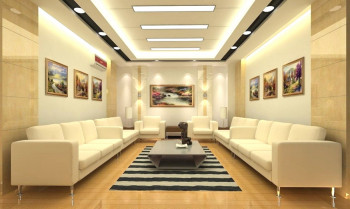Here Are 5 Popular Flooring Design Ideas For Your Beautiful House
Who here doesn’t like decorating their home? I do! As fun as it may sound, the home decoration process also tends to be frustrating and annoying. Let me explain, why!
There’s no home decorating challenge as frustrating as changing old, worn-out floors. Painting, installing new machines, buying accessories or even replacing furniture is easier as compared to replacing an entire floor. It is a much bigger – and exhausting– job.
Am I insinuating that you just have to live with your ratty old carpeting or scuffed-up vinyl? Not at all. These days, there are lots of different flooring options available in Pakistan, including several that are very affordable. Vinyl, laminate, and ceramic tile can all cost as little as PKR 160 per square foot.
However, you can’t just randomly pick up one of these flooring choices and expect it to work in any space where you put it down. Each kind of flooring has advantages and disadvantages. Moreover, a type that’s ideal for one room could be a bad choice for another.
So, before we get started on your flooring project, let’s do a little research on the different kinds of flooring and learn about their advantages and disadvantages.
Types of Flooring to Consider
No one type of flooring is ideal for all of your rooms. For example, hardwood is consistently popular because of its warm, classic look, but it barely survives the moisture or rough treatment. Here’s a look at the pros, cons of several popular types of flooring in Pakistan, as well as some ideas about where they can work best.
1. Hardwood
Hardwood Floor Brown Solid wood has become one of the most popular types of flooring in Pakistan, lately. Its construction is about as simple as you can get – wooden boards or planks about 0.75 inches thick, which are installed by nailing them to a wooden subfloor.

It can be made from many kinds of wood, from domestic species such as oak and maple to exotic varieties such as Brazilian cherry or purpleheart.
Wood flooring can be sold either finished or unfinished. If you choose unfinished flooring, you will need to sand and finish it after installing it.
Note: Wood is a renewable resource, but it isn’t always harvested in sustainable ways. Cutting trees without planting new ones in their place, or cutting them faster than new ones can grow, contributes to global warming and we don’t want that, do we?
1.1. Advantages
People love having solid wood flooring because it looks great in any style of home with any decor. It’s also very long-lasting since it can be refinished up to five times to remove surface scratches. Real estate experts say, “adding hardwood floors can increase the resale value of your home as well”.
Not only this, wooden floors are fairly easy to clean; just sweep them regularly and mop up all spills promptly. Howzat!!
1.2. Disadvantages
The biggest downside of hardwood floors is that they don’t live up to rough handling. They can warp if they’re exposed to moisture for a long time, hence, a bad choice for bathrooms or laundry rooms. They are vulnerable to scratches and dents can shrink and swell due to changes in temperature. As a result, they need to be refinished as often as once every 10 years to maintain their looks. I hope you’re not feeling broke already.
1.3. Best Usage
Wood flooring is best for spaces that don’t get lots of traffic, such as living rooms, halls, and bedrooms. It is considered the best choice for living rooms, dining rooms, and family rooms.
2. Ceramic Tile
A ceramic tile is made from a mixture of clay and shale that’s fired in a kiln-like pottery. It’s a hard material that comes in a huge variety of colors, shapes, and patterns. Research suggests that not all ceramic tiles are tough enough for flooring, so it’s important to make sure the ones you buy are rated for use on floors
 .2.1. Types
.2.1. Types
There are four main types of ceramic tile:
Glazed Ceramic, Porcelain, Quarry Tile, Terracotta.
2.2. Advantages
Tile comes in many colors and shapes, so it can fit in with any style of home. Thanks to modern printing technology, it’s also possible to create ceramic tiles virtually, with any pattern. It can mimic the look of natural stone or even wood, though it won’t feel like wood underfoot.
Many consumers suggest that porcelain tile is the most durable type of flooring, resistant to scratches, dents, and moisture. It’s also very easy to clean. Glazed ceramic and porcelain tile requires very little maintenance as compared to the other types
2.3. Disadvantages
Tile feels cold and hard underfoot, and it makes footsteps sound louder. Glazed ceramic tile can also be slippery unless it’s coated with a special anti-slip finish.
Durability varies depending on the type of tile you choose. Terracotta tile requires regular sealing. Glazed tile is easy to clean and maintain, but the lines of grout between the tiles can stain if you don’t seal them regularly. And although tile is a durable material, it’s not that easy to fix if a single tile happens to crack.
2.4. Best Usage
Porcelain has been suggested to be the best choice for high-traffic areas, such as kitchens as well as for wet rooms such as baths and laundry rooms. It’s also ideal for an enclosed porch or sunroom.
3. Laminate
Laminate flooring is constructed with a thin veneer over layers of plywood or compressed fiber. However, the top layer is not wood but a photograph under a clear plastic coating. That means laminate can look like wood, stone, tile, or just about any other material.

3.1. Types
Laminate comes in either planks or tiles. Most of them are floating floor systems, which you can install right over your old flooring with no glue or nails.
3.2. Advantages
Laminate can mimic the look of wood or stone for much less money. It’s also easy to clean and requires very little maintenance. It’s a hard material that resists scratching and scuffing better than real wood.
Laminate is easy to install over an existing floor, saving you time and money on your flooring project.
3.3. Disadvantages
Like tile, laminate can be slippery when wet. Also, if water stands on it for any length of time, it can get in between the layers of the material, causing the planks to warp. Unlike real wood, laminate can’t be refinished when it wears out, only replaced. That can make it a less cost-effective choice than wood or tile over the long term.
3.4. Best Usage
Laminate is a good material for high-traffic areas, such as kitchens, foyers, and playrooms. It is suggested to be a reasonable choice for basements as long as they have no problems with leaks or standing water. It’s best to avoid this material in wet rooms, such as bathrooms and laundry rooms.
4. Vinyl
Vinyl is a type of resilient flooring, a flexible material that feels a bit softer underfoot than rigid wood or tile. It’s made from a layer of PVC (short for polyvinyl chloride) plastic over a layer of felt. Cushioned vinyl has a thin layer of foam as well, making it more comfortable to walk on. Thicker vinyl flooring can have a textured surface to make it look like wood or stone.

4.1. Types
Vinyl flooring comes in several forms. Sheet vinyl is a large sheet of flooring that you unroll, cut to size, and glue to your subfloor. You can also buy click-style vinyl planks, similar to vinyl tiles, that you glue in place one at a time. Some vinyl tiles come with a peel-and-stick backing, so you don’t need to add any adhesive before laying them down.
4.2. Advantages
Vinyl is a tough material that stands up to both moisture and heavy traffic. It’s comfortable to walk on and warmer on bare feet than tile. It’s also inexpensive and durable; a good-quality vinyl floor can last 20 years.
Like tile, vinyl comes in a wide range of colors and patterns. It can convincingly simulate the look of almost any other material.
4.3. Disadvantages
Vinyl flooring varies in quality. You’ll have less choice of color and pattern with cheaper types, and they often have a fake look. Although vinyl is more durable than it used to be, Consumer Reports still found it’s more likely to scratch than any other type of flooring. Also, if you install it directly over a subfloor with no underlayer, it can have a hollow, echoey sound when you walk on it. In addition to this, it’s also not eco-friendly.
4.4. Best Usage
Vinyl is appropriate for kitchens, baths, and other wet rooms. It’s also suitable for rooms that get a lot of traffic.
5. Carpet
Wall-to-wall carpet is a perennial favorite for bedrooms and living areas. It’s made by pulling soft fibers, such as wool or nylon, through a woven backing, then gluing on more layers of backing to strengthen the material. You install it by nailing it down over a layer of padding, which adds cushioning and prolongs the life of the carpet.

5.1. Types
Carpet comes in a wide variety of colors, textures, and materials. It can be made from:
Wool, Nylon Acrylic, Polyester or, Polypropylene,
Carpeting varies in thickness and fiber density. In general, the higher the density, the more durable the carpet will be.
5.2. Advantages
Many people like carpet because it feels soft and warm underfoot. It’s also quiet, slip-resistant, and fairly easy to install.
5.3. Disadvantages
Carpeting is more difficult to clean than hard flooring. Even with regular vacuuming, it can still harbor dirt that only steam cleaning can remove. It’s also vulnerable to staining. The soft fibers of a carpet can harbor allergens such as pollen and pet dander, making it a bad choice if anyone in your home suffers from allergies.
5.4. Best Usage
Carpet is most appropriate for areas such as bedrooms and living rooms, where less dirt gets tracked in and nothing is likely to be spilled on it. Polypropylene carpets can also work in outdoor spaces such as enclosed porches.
Caution: Before you make your final decision about flooring, buy a small sample to take home with you. Even if a product looks great in the showroom, you have no way of knowing how it will look with your decor and lighting until you see it in your space. Spending a few bucks on a sample ahead of time could save you from spending hundreds or thousands on a flooring project you won’t be happy with.
The flooring options listed here are the most popular choices, but they’re not the only ones. Look through home decorating magazines and websites, and you’ll see a variety of other flooring types, such as stone tile, stained concrete, terrazzo, and rubber flooring. So, if you’ve looked at all the standard options and nothing quite fits your taste and budget, don’t hesitate to branch out.
Another possibility to consider if you’re on a tight budget is refinishing or painting your old floors. Refinishing a worn-out hardwood floor is a lot cheaper than replacing it, even if you have to hire a professional to do it. And painting is a reasonable DIY project that can work on old wood floors, concrete, laminate, or even vinyl. Check out tutorials online to learn how.
So, what’s your favorite type of home flooring?

Content












Join our growing community
Subscribers
Youtube
Twitter
Instagram
Facebook